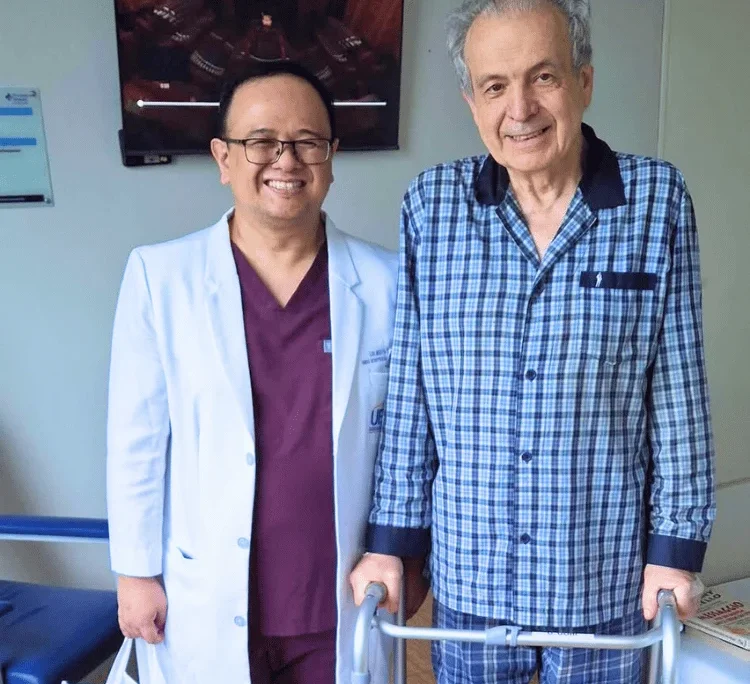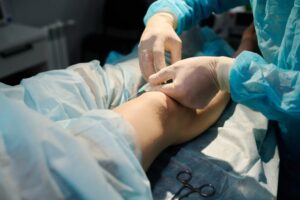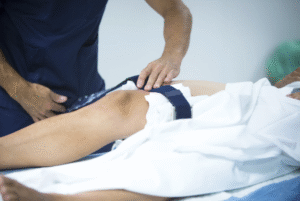Choosing hip replacement abroad can be a life-changing decision for people struggling with severe hip pain, stiffness, or mobility challenges. For many patients, the high costs or long waiting lists in their home countries make local surgery almost impossible. That’s why medical travelers from the USA, UK, Australia, Canada, and other countries are increasingly seeking care in destinations like the Philippines, where they can enjoy world-class orthopedic treatment at a fraction of the cost. At Hips and Knees Joint Restoration and Replacement Center, patients not only benefit from advanced surgical expertise but also from compassionate support throughout their entire journey.

Why Patients Choose Hip Replacement Abroad
The decision to undergo hip replacement abroad is often driven by a combination of financial savings, shorter waiting times, and the quality of care available. Patients can save up to 50–70% compared to surgery costs in countries like the United States or the United Kingdom. Instead of waiting months or even years for surgery, patients abroad can access treatment within weeks. Beyond affordability and efficiency, the Philippines offers internationally accredited facilities and skilled orthopedic surgeons who use advanced techniques like the Direct Anterior Approach (DAA), ensuring less pain and faster recovery.
According to the National Institutes of Health, hip replacement surgery is one of the most effective procedures for restoring mobility and improving quality of life for people suffering from advanced arthritis or joint degeneration. Choosing to have it abroad allows patients to combine these medical benefits with a smooth, well-planned medical travel experience.
Understanding Hip Replacement and When It’s Needed
Hip replacement is a surgical procedure where damaged or worn-out parts of the hip joint are replaced with prosthetic implants. It is usually recommended for patients with conditions like osteoarthritis, rheumatoid arthritis, hip dysplasia, or post-traumatic injury. The goal is simple: reduce pain, restore joint function, and help patients return to everyday activities.
The benefits of hip replacement abroad go beyond surgery. Many medical travelers experience an immediate improvement in mobility and independence. With advanced methods like the Direct Anterior Approach, surgeons can operate with minimal disruption to muscles, leading to quicker healing and less post-operative discomfort.
Preparing for Your Hip Replacement Abroad Journey
Preparation is one of the most important aspects of undergoing hip replacement abroad. At Hips and Knees Joint Restoration and Replacement Center, patients start with an initial online inquiry, followed by a virtual consultation with internationally trained surgeons. During this session, patients discuss their medical history, review imaging scans, and clarify expectations about surgery and recovery.
After this consultation, patients submit medical records such as X-rays and lab results, which the surgical team reviews carefully to ensure they are suitable candidates. Once approved, patients receive a transparent and customized quotation covering the surgery, hospital stay, rehabilitation, and accommodation. This clear and upfront pricing model helps patients plan their budget effectively and avoid unexpected expenses.
For many patients, planning a medical journey abroad may seem overwhelming. That’s why the center’s medical tourism team offers full support with travel arrangements, including assistance with flights, accommodations, and even visa guidance if needed.
Arrival in the Philippines: What to Expect in the First Week
Once patients arrive for their hip replacement abroad, they are welcomed at the airport and transferred to comfortable accommodations arranged by the center’s concierge service. The first week typically includes in-person consultations, thorough medical check-ups, and prehabilitation sessions. Prehabilitation involves targeted exercises guided by physical therapists to strengthen muscles before surgery, ensuring a smoother recovery.
The care team also focuses on emotional support, cultural comfort, and making sure patients feel at ease in a new country. Whether patients travel alone or with a companion, every step of the process is carefully planned to reduce stress.
The Hip Replacement Surgery and Inpatient Recovery
The core of the hip replacement abroad journey is the surgical procedure itself. At Hips and Knees Joint Restoration and Replacement Center, surgeries are performed in a JCI-accredited hospital, which adheres to strict international standards of safety and care. The orthopedic team, including experts like Dr. Tec, Dr. Marañon, and Dr. Ang, has extensive international training and experience.
On surgery day, patients receive advanced anesthesia and pain management strategies tailored to minimize discomfort. Early mobilization is encouraged, often within 24 hours after the operation. The typical hospital stay ranges from three to five days, during which patients receive attentive monitoring, daily visits from their surgeon, and personalized recovery guidance.
Recovery and Rehabilitation Abroad
After hospital discharge, the hip replacement abroad journey continues with outpatient recovery in nearby hotels or serviced apartments chosen for comfort and accessibility. Patients usually undergo 2–3 physiotherapy sessions per week, focusing on regaining strength and flexibility. Optional nurse visits are available for wound care and medication management, ensuring patients receive comprehensive support throughout recovery.
A key advantage of recovery abroad is the supportive environment. Filipino hospitality, combined with world-class rehabilitation practices, creates a positive healing atmosphere. Patients also enjoy telemedicine support once they return home, allowing their surgeon to monitor progress and provide guidance remotely.

Cost Savings and Added Benefits
Financial considerations play a big role in choosing hip replacement abroad. Packages in the Philippines typically cost 50–70% less than in countries like the US, UK, or Australia. These savings cover not only the surgery itself but also accommodation, rehabilitation, and post-operative care. Even after factoring in travel expenses, patients often save tens of thousands of dollars.
Beyond cost savings, patients benefit from faster scheduling, transparent pricing, and the chance to recover in a warm, culturally welcoming environment. The World Health Organization emphasizes that safe medical travel is possible when patients choose internationally accredited facilities—something the Hips and Knees Center provides.
Why Choose Hips and Knees Joint Restoration and Replacement Center?
Several factors make Hips and Knees Joint Restoration and Replacement Center a trusted choice for hip replacement abroad:
- Internationally trained surgeons specializing in hip and knee replacement
- Transparent all-inclusive pricing without hidden fees
- JCI-accredited hospital facilities with global safety standards
- Concierge-style support for travel, accommodations, and recovery
- Compassionate, patient-centered care with long-term telemedicine follow-up
Patients from across the USA, UK, Australia, Canada, and Europe have trusted the center for their surgeries, citing excellent outcomes, reduced pain, and improved quality of life. For many, it represents the perfect balance of affordability, quality, and compassionate care.
Frequently Asked Questions
How much does hip replacement abroad cost?
Patients typically save 50–70% compared to costs in the USA, UK, or Australia. Packages are transparent and cover surgery, hospitalization, rehabilitation, and accommodations.
Is surgery abroad safe?
Yes. Procedures are performed in JCI-accredited hospitals that follow strict international safety standards, ensuring the same quality as top hospitals worldwide.
How long will I stay in the Philippines for hip replacement abroad?
Most patients stay for about three to four weeks, covering surgery, inpatient recovery, and rehabilitation before returning home.
Can I bring a family member with me?
Absolutely. The center helps arrange comfortable accommodations for companions, ensuring patients have support throughout their stay.
What happens once I return home?
Telemedicine follow-ups are provided, along with detailed rehabilitation plans. Your surgeon will continue monitoring your recovery even after you’ve returned to your home country.
Will I need physical therapy after surgery?
Yes. Physical therapy is essential for restoring strength, flexibility, and full hip function. Sessions begin within days after surgery and continue for several weeks.








